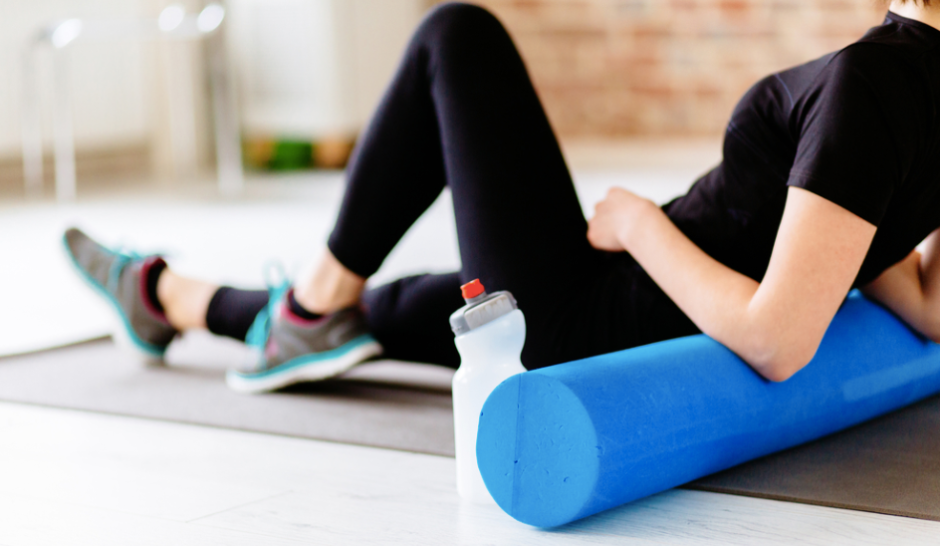
If you’ve ever experienced IT band pain, you know how debilitating it can be. The IT band, or iliotibial band, is a thick band of tissue that runs from the hip to the knee. When it becomes inflamed, it can cause pain and discomfort, especially during activities like running, biking, and hiking.
One effective way to alleviate IT band pain is through foam rolling. Foam rolling is a form of self-massage that can help release muscle tension and improve flexibility. In this article, we’ll discuss how to use a foam roller for IT band pain, including which foam roller to choose, how to properly use it, and additional exercises to complement your foam rolling routine.
Choosing the Right Foam Roller
The first step in using a foam roller for IT band pain is choosing the right foam roller. There are many types of foam rollers available, each with different densities and textures. Here are some tips for choosing the right foam roller:
Density: Foam rollers come in different densities, from soft to firm. Beginners may want to start with a softer foam roller, while more advanced users may prefer a firmer roller. A softer foam roller will provide a gentler massage, while a firmer foam roller will provide a deeper massage.
Texture: Some foam rollers have bumps or ridges that can provide a more intense massage. If you’re new to foam rolling, you may want to start with a smooth foam roller and work your way up to a textured one.
Size: Foam rollers come in different sizes, from small handheld rollers to larger ones that can accommodate your entire body. If you’re using a foam roller for IT band pain, you’ll want a longer roller that can cover the entire length of your leg.
Material: Foam rollers can be made from different materials, including foam, rubber, and PVC. Foam rollers are the most common and affordable option, but they may not last as long as other materials.
Foam Roller Technique
Once you’ve chosen the right foam roller, it’s time to start rolling. Here’s a step-by-step guide on how to use a foam roller for IT band pain:
Lie on your side with the foam roller under your hip. Your bottom leg should be straight, while your top leg should be bent and resting on the floor for support.
Use your arms to lift your hips off the floor and roll the foam roller down your leg towards your knee. Roll slowly, pausing on any tight or sore spots.
When you reach your knee, reverse the direction and roll back up towards your hip.
Repeat for 1-2 minutes on each leg.
It’s important to note that foam rolling can be uncomfortable at first, especially if you have tight or sore muscles. Start with shorter sessions and gradually increase the duration as your muscles become more accustomed to the pressure.
Additional Exercises
While foam rolling can be an effective way to alleviate IT band pain, it’s important to complement your foam rolling routine with other exercises. Here are some additional exercises that can help strengthen and stretch your IT band:
Clamshells: Lie on your side with your knees bent and feet together. Keeping your feet together, lift your top knee as high as you can without moving your pelvis. Lower back down and repeat for 10-15 reps on each side.
Side-Lying Leg Lifts: Lie on your side with your bottom leg straight and your top leg bent in front of you. Lift your bottom leg as high as you can without moving your pelvis. Lower back down and repeat for 10-15 reps on each side.
Yoga Twists: Start in a seated position with your legs extended in front of you. Bend your right knee and place your foot on the outside of your left thigh. Twist your torso to the right, placing your right hand on the floor behind you for support. Hold for 30 seconds and repeat on the other side.
Lunges: Start in a standing position with your feet hip-width apart. Step your right foot forward and bend both knees, lowering into a lunge. Keep your left leg straight and feel a stretch in your left hip and IT band. Hold for 30 seconds and repeat on the other side.
Conclusion
IT band pain can be frustrating and limiting, but foam rolling can be an effective way to alleviate pain and improve flexibility. By choosing the right foam roller, using proper technique, and complementing your foam rolling routine with other exercises, you can help keep your IT band healthy and pain-free. Remember to listen to your body and start slowly, gradually increasing the duration and intensity of your foam rolling sessions as you become more comfortable with the technique.

